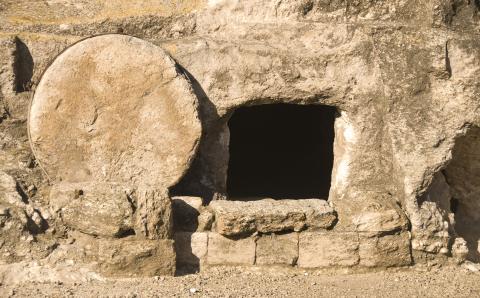There have been allegations that Jesus’ resurrection was a myth, a story the apostles and gospel writers invented to support their claims that Jesus was the Son of God. Let me give you three reasons why I think the resurrection of Jesus was not made up by early Christians.
First, if the gospel writers made it up, why did they make women the first eyewitnesses to the empty tomb? In that first-century world, women were regarded as less than credible witnesses. From ancient Roman law to Jewish rabbinic law, women’s testimony was treated as unreliable. Yet all four gospels consistently described women as the first eyewitnesses. In our day, this would be like using the testimony of a drunk person to back up claims of a miracle. That’s not very smart if I want people to believe my story. Similarly, it wouldn’t make sense for the apostles to use women as primary witnesses to the central event of Christian faith unless it was true, as embarrassing as it might have been for them.
Second, Jesus’ resurrection story went against conventional ancient Jewish resurrection beliefs. Most first-century Jews believed that bodily resurrection only happens on the last day, on Judgment Day. That is what Martha, for instance, assumed Jesus was talking about in their conversation outside Lazarus’ tomb in John 11. As Martha said, “I know he (Lazarus) will rise again in the resurrection at the last day” (v. 24). This Jewish belief means that everybody altogether will be resurrected at the end time—a large-scale resurrection. Nobody thought the Messiah was going to be resurrected first, all by himself, many years or even centuries before Judgment Day. In fact, most Jews weren't expecting the Messiah to die, let alone be resurrected!
Furthermore, although most ancient Jews were not clear as to what resurrected bodies might look like, many drew from Daniel 12:3 and believed those new bodies would be glorious, shining like the stars. But the Gospels make no mention at all of a shining body. Jesus’ resurrected body was transformed, but not shining. So if the disciples made up Jesus’ resurrection, these unconventional factors might make their account less believable.
Finally, if early Christians made up the resurrection of Jesus, why did their religious opponents not produce Jesus’ body to refute their story? It’s easy to prove Jesus did not rise from the dead: just produce the body—unless the Jewish religious authorities didn’t have a body to show.
Matthew’s Gospel describes how the religious leaders bribed the soldiers who guarded the tomb to spread a lie that the disciples stole the body (Matt. 28:11-15). Yet people still believed the resurrection story.
Perhaps those who knew the disciples knew they were not likely to overpower a group of fully armed soldiers to steal a body.
Furthermore, even if they did steal Jesus’ body, why would they take time to unwrap it before taking it away? The Gospels note that the linen used to wrap the body was left in the tomb (Luke 24:12; John 20:5-7). It doesn’t make sense to unwrap the body first if you are in a hurry to steal away. It’s an unusual bit of storytelling detail, isn’t it?
Given these facts and more I haven’t mentioned, it seems unlikely Jesus’ resurrection was simply invented by his disciples.
About the Author
Shiao Chong is editor-in-chief of The Banner. He attends Fellowship Christian Reformed Church in Toronto, Ont.
Shiao Chong es el redactor jefe de The Banner. El asiste a Iglesia Comunidad Cristiana Reformada en Toronto, Ont.
시아오 총은 더 배너 (The Banner)의 편집장이다. 온타리오 주 토론토의 펠로우쉽 CRC에 출석한다.
You can follow him @shiaochong (Twitter) and @3dchristianity (Facebook).






